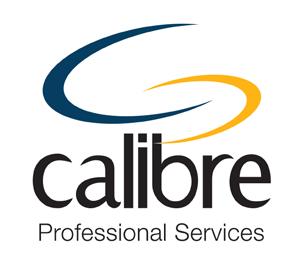
3 minute read
Things to look for when purchasing a development site.
There is a common misconception that if land is identified for development that it is ready for development, however the process of acquiring a site is fraught with risk, often resulting in significantly overpaying for land or enduring years of holding costs if not properly investigated.
Land subdivision and development can be a minefield, with myriad planning and regulatory processes to be completed, in addition to the physical infrastructure and servicing requirements which impacts on the value of the land and the time frames for its development. Some of these infrastructure and servicing requirements could see a parcel of land worth substantially less or more than adjoining parcels because of site-specific planning requirements or servicing requirements that can vary substantially site to site, even between adjoining sites.
Advertisement
The first line of investigation must always be to check the planning status of the site to determine current zoning and a review of strategic documentation to confirm the site’s requirements, potential yield and other considerations that will impact on value (eg easements, waterways, roads, open spaces etc.). The planning review should include investigating the following:
• Zoning – What uses does the zone allow/prohibit? Is the land zoned appropriately for the proposed development? Without the correct zoning on the land, you may not be able to proceed with your preferred development.
• Overlays – These provide the land with another layer of planning restriction. They come in a variety of forms, but are often in relation to environmental, flooding, heritage and bushfire concerns.
• Strategic documentation – Within the planning process, Council and other authorities (like the Victorian Planning Authority) prepare documentation reflecting their vision of areas identified for development. This documentation also indicates the requirements of the precinct and its individual parcels. A thorough review of the relevant strategic documentation is key to determine the possibilities for the land and what can be achieved.
• Contributions – often within land development, the developer is required to pay contributions towards the infrastructure associated with the development of the wider precinct. These are usually referred to as DCP’s and ICP’s, although they slightly differ and therefore not interchangeable. A thorough investigation into contributions is recommended early in the process, as it can add significant costs to a project so needs to be anticipated.
It is also critical to investigate the physical infrastructure requirements for development of the site and I note that adjoining sites can have totally different servicing requirements.
• Greenfield development will typically require sewerage, water supply (drinking and recycled where applicable), stormwater drainage, electricity supply and telecommunications (Fibre to the Premises). You may also require gas supply if preferred and available, however gas is not considered an essential service.
• Stormwater drainage is managed by the local catchment management authority, which for the Melbourne growth areas will be Melbourne Water. If stormwater infrastructure isn’t immediately available there are often temporary measures that can satisfy the authority’s requirements in the short term, however these works are not reimbursable, so great consideration needs to be made for the best stormwater strategy.
• Sewerage infrastructure is essential and if not immediately available, can be very expensive to deliver. The local retail water company (eg. Greater Western Water, Yarra Valley Water, South East Water) will usually have strategies but implementation of their strategies often relies on downstream property access and an understanding of the timing of delivery of downstream infrastructure.
• Drinking water supply and in many areas recycled water reticulation, will be a requirement and is also usually covered by the growth strategies of the local water company. As with sewer, an understanding of the strategies and the likely timing of delivery of services is important and can be a major cost factor.
Other factors can have a major impact on the value of a proposed development site and the future cost of development:
• Aboriginal heritage requirements – Some parcels of land may have an area of sensitivity, which may require a general site assessment or a more extensive process, all the way to on-site salvaging. This process can often cost hundreds of thousands of dollars, so consultation with an informed and experienced professional is recommended.
• Flora and fauna requirements – potential habitat, tree and native vegetation removal should be reviewed early in the process, as it can impact development of the land and yield. Payment obligations may also be required for vegetation removal, so this may need to be factored into any offer.
• In some areas you may come across land that has been affected by mining operations in the past, affecting site earthworks and possibly future building costs.
• Land can also be potentially impacted by land contamination (artificial or otherwise).
The key to the above is a well-considered due diligence process. This is critical to minimise the risks that go with an acquisition. Wherever possible, we recommend negotiating a reasonable due diligence period in your contract and engage an independent, reputable & experienced consultant (or consultants) to provide the critical advice on all the above matters. And of course, as part of that due diligence process you should engage with a reputable and trusted real estate adviser to provide professional advice on the forecast selling pricing and strategies.
We at Calibre offer a full range of consultancy services so are well placed and happy to discuss your future development and due diligence needs.

Calibre’s professional services division has been acquired by Egis, a global firm active in the consulting, construction engineering and mobility service sectors with operations in 120 countries and over 18,000 employees.
Rod Jackson Principal - Advisory +61 3 9203 9000 Rod.Jackson@calibregroup.com



